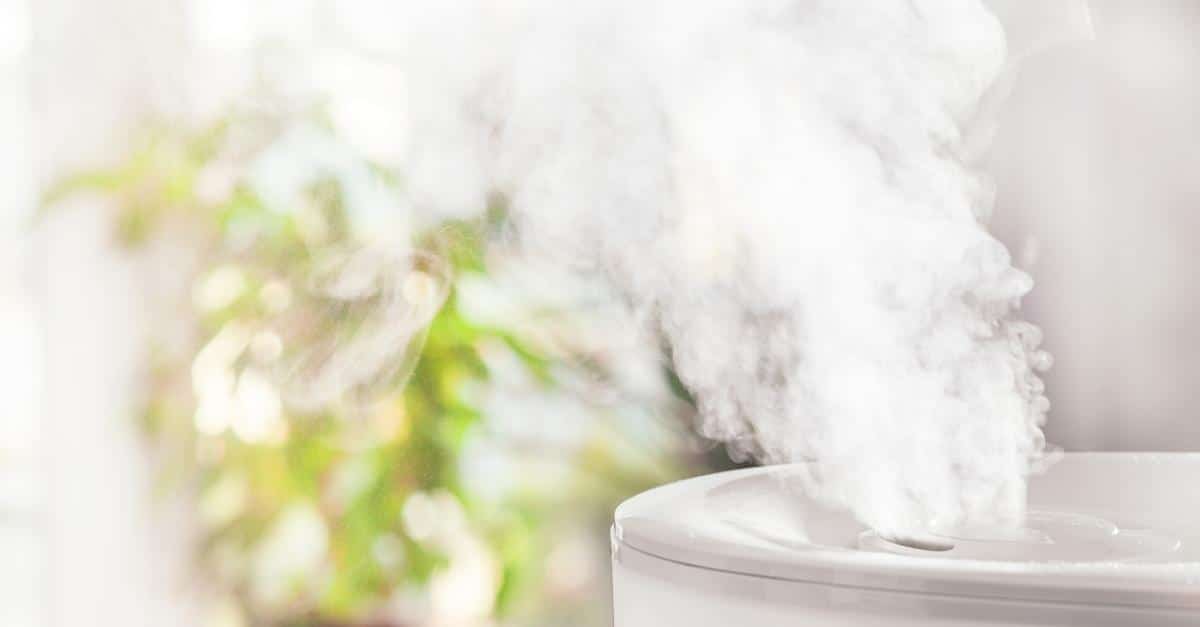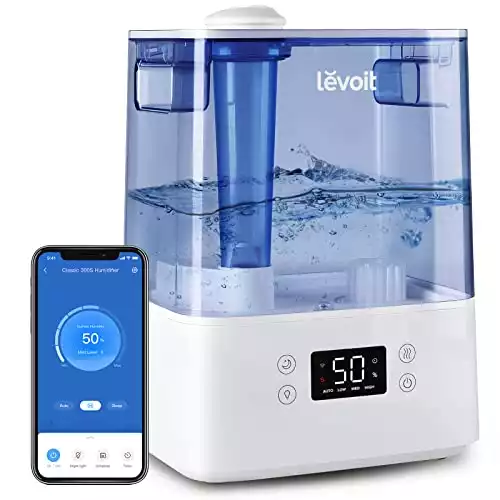Yes, humidifiers are good for people with COPD and can be critical to better breathing indoors. Here’s why.
It should come as no surprise that air quality is one of the most significant factors affecting those who live with chronic obstructive pulmonary disease (COPD).
As poor air quality (such as areas of heavy smoke, pollution or other airborne particulates) can further exacerbate COPD symptoms, it’s critical for the patient’s health to avoid these areas as much as possible.
It’s also important to exercise control over one’s air quality at home.
Although alternative treatment options exist to relieve symptoms and slow disease progression, there are also a variety of tips and products to better purify your air at home.
However, in these winter months, what is often most important in regulating air quality is ensuring that the type of air inhaled is most beneficial to your respiratory health; we’re talking about the effects of warm air vs cold air.
With your health in mind, we break down the necessity of COPD humidifiers and show you just how positive one can be in improving air quality and respiratory health.
- Extra Large 6L Tank
- App & Voice Control
- Humidity Setting with Sensor
- Quite Sleep Mode
- Night Light
- Essential Oil Diffuser
The Importance of Humidifiers to Treat COPD
When it comes to those with COPD, the air’s temperature can dramatically affect respiratory health. If the air temperature is particularly cold, hot, or dry, COPD symptoms can flare up.
When outdoors in cold climates, it is generally advised to wear a scarf or a cold weather mask in order to keep the air you breathe warm. This promotes easier breathing for the lungs compared to colder, dryer air under typical cold-weather conditions.
However, when at home, it’s possible to change the air temperature and quality through the use of humidifiers, removing the necessity to wear a scarf or cold weather mask indoors.
Although humidifiers should be used only as directed by doctors and manufacturers, the device can provide a greater sense of relief for those who experience trouble breathing at home during winter.
This allows patients to cough up phlegm with greater ease and reduces nasal irritation from supplemental oxygen.
The Trouble with Mold and Pollen
As we’ve mentioned earlier, humidifiers can be incredibly beneficial to those with lung disease as it holds the ability to alter one’s air quality at home significantly.
However, when boosting humidity indoors, which essentially means adding water vapor to the air, it’s important to remember that this increased humidity can promote the build-up of harmful airborne particulates such as mold, bacteria, dust mites, and viruses.
As the air becomes more ‘moist’ in general, it can increase the population and occurrence of these respiratory stressors, potentially causing indoor air conditions to worsen if the humidifier is used outside of manufacturer directives.
Exposure to mold and other airborne particulates can spark the following symptoms:
- Increased coughing
- Wheezing
- Nasal congestion
- Sore throat
- Sneezing
- Rhinitis (runny nose)
Caring for Your Humidifier
When using humidifiers to help with your COPD, it’s important to follow not only your primary doctor’s directives but also that of the device’s manufacturer.
In essence, 40 percent humidity levels are best for people with COPD.
When using the machine, it’s also important to manage COPD at home by changing the filters of air conditioning units and heating systems in order to ensure that the increased humidity is not sparking the growth rate of mold and bacteria on old filters.
In a general sense, humidity can be helpful to breathing, but too much humidity can be just as negative.
When taking a shower, a helpful tip in reducing overbearing humidity levels is to use the exhaust fan. Opening up the bathroom door (if applicable) can also help allow the room to air out and release steam.
Moving Forward…
It’s important to know the road ahead in the treatment of COPD. Although COPD can seem insurmountable, new discoveries are being made every day and the first step to living a longer life is finding the best treatment plan for you.
Changing one’s diet and consistently exercising are among the best lifestyle changes one can make aside from quitting smoking.
For people with lung disease, a change in their quality of life could mean the difference between struggling to walk to the mailbox and riding a bike.
- Extra Large 6L Tank
- App & Voice Control
- Humidity Setting with Sensor
- Quite Sleep Mode
- Night Light
- Essential Oil Diffuser

Christine Kingsley, APRN is the Health and Wellness Director at the Lung Institute where she focuses on providing helpful online resources for people looking for information on various lung diseases, breathing exercises, and healthy lifestyle choices. She advocates for holistic care that involves working with your doctor to explore all options including traditional and alternative care while focusing on diet and exercise as proactive measures.










